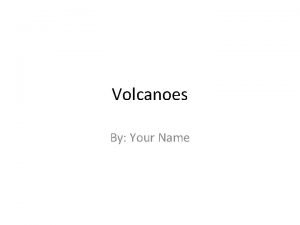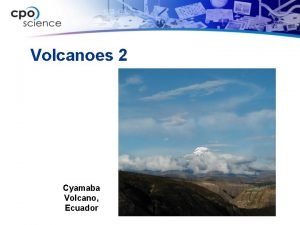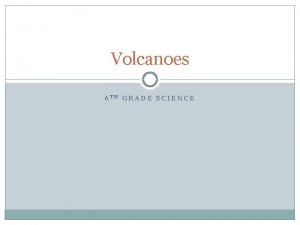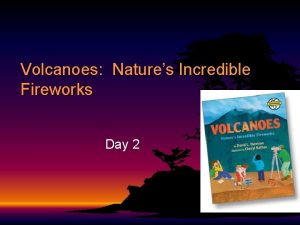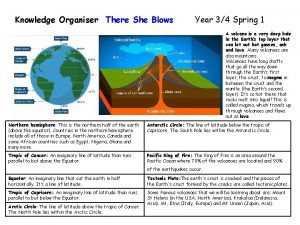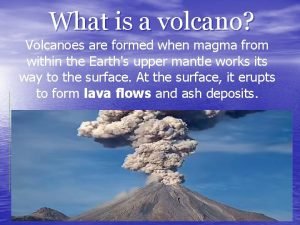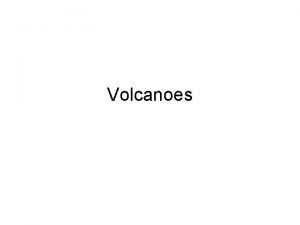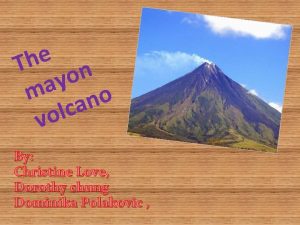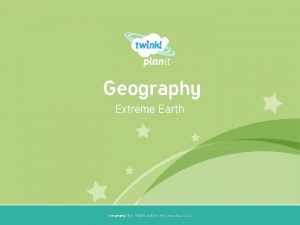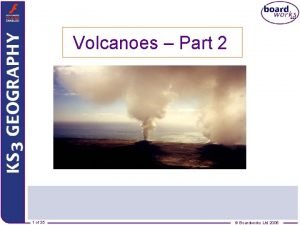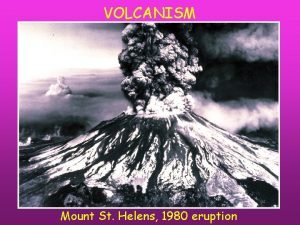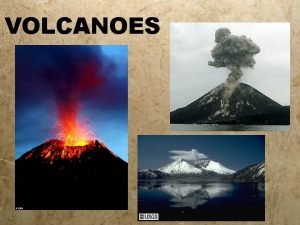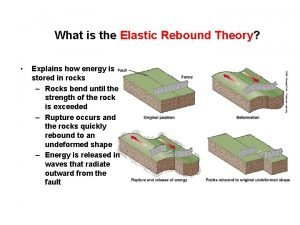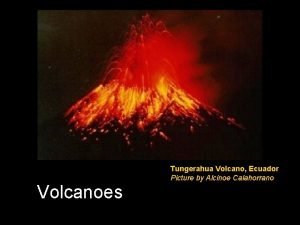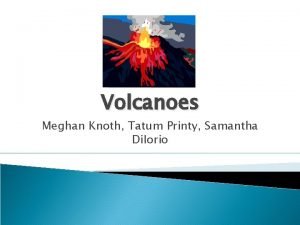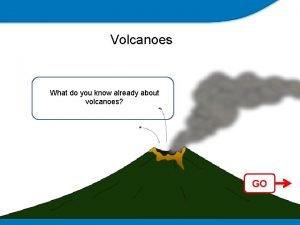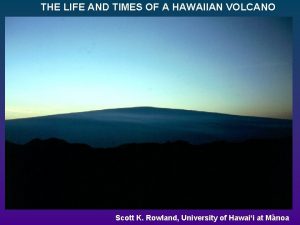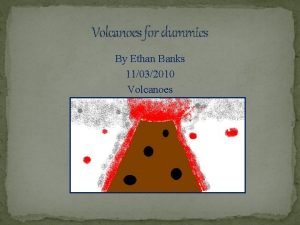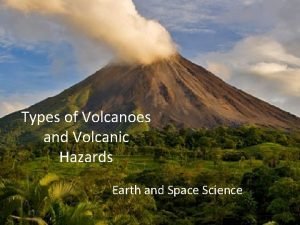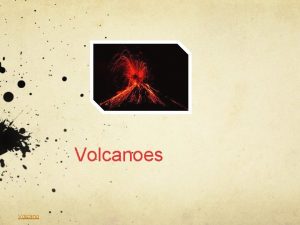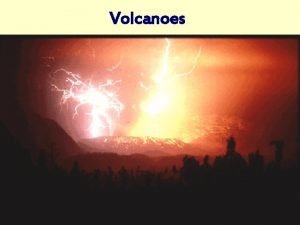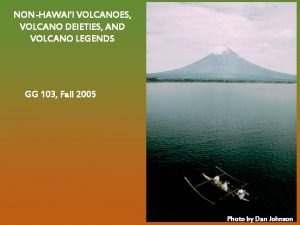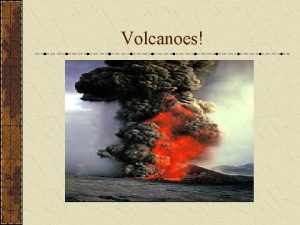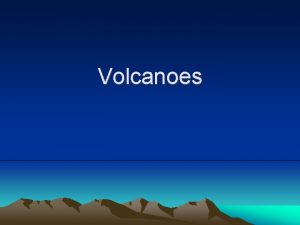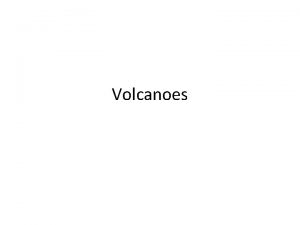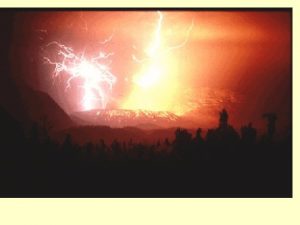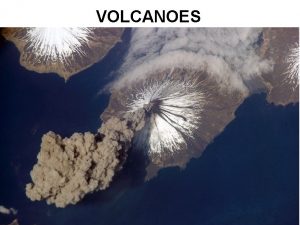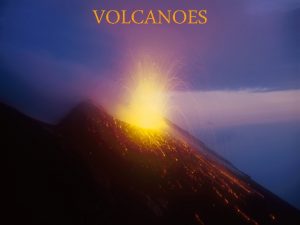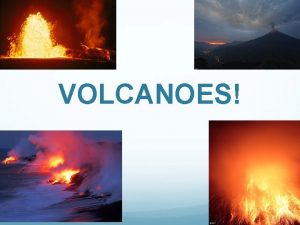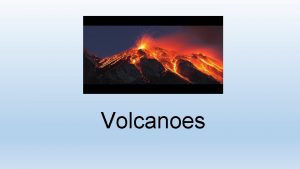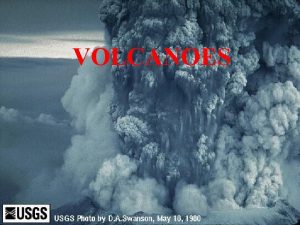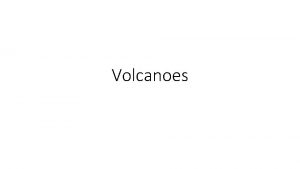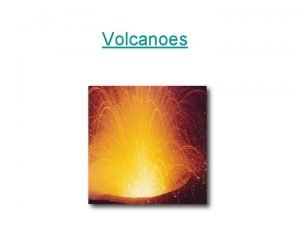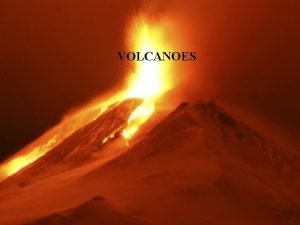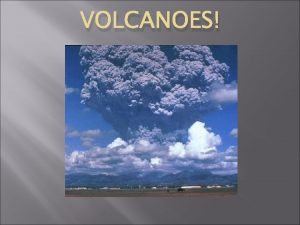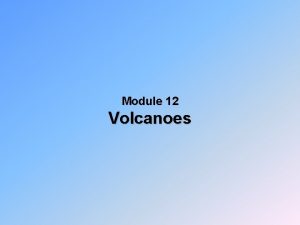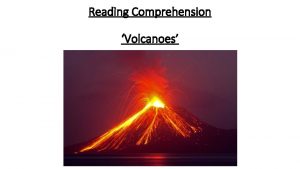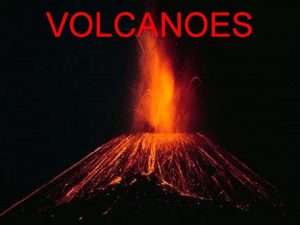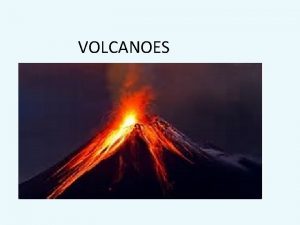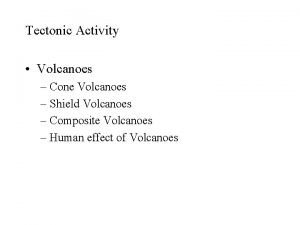VOLCANOES 21 2 What is a volcano Volcano






















- Slides: 22

VOLCANOES 21. 2

What is a volcano? • Volcano: opening in the Earth’s crust where magma erupts onto the surface • Magma: molten rock underground • Lava: magma that has reached Earth’s surface

How Does A Volcano Form? v Under certain conditions, small amounts of mantle rock can melt, forming liquid magma. The magma rises upward through the crust, erupting at the surface as a volcano.

Structure of a Volcano

3 Factors That Determine the Viscosity of Magma: 1. Temperature – the higher the temperature, the lower the viscosity v 2. Water Content – the more water, the lower the viscosity v 3. Silica Content – the higher the silica content, the higher the viscosity. Silica acts like glue. v

TYPES OF LAVA v v Felsic - high silica content - light colored - slow moving - explosive eruptions Mafic - low silica content - dark colored - fast flowing lava - quiet eruptions

LAVA FRAGMENTS v Tephra: solid fragments of lava - ash: less than 2 mm diameter - lapilli: 2 – 64 mm diameter - bombs: 64 mm or higher diameter

Ash Lapilli Bombs

OTHER LAVA FRAGMENTS v aa – broken, sharp blocks of lava v Pahoehoe – smooth, wrinkled lava

VOLCANO ZONES Pacific Ring of Fire - zone around the Pacific Ocean - most active area of volcanoes in World v Mid-Ocean Ridges - zone along divergent plates v Eurasian Belt - zone along south border of Eurasian plate v

Hot Spots A hot spot is a region where hot rock extends deep within the mantle to the surface. v Example: Hawaii v

3 TYPES OF VOLCANOES

1. CINDER CONE Steep sides v Smallest, most abundant v Active for a short time, then become dormant v

2. COMPOSITE Consists of alternating layers of ash, cinders, and lava v Steep sides v Thick magma v Lot of gases v

3. SHIELD Consists of layers of mafic lava v Gently sloping sides, wide base v

FAMOUS ERUPTIONS Vesuvius, Italy – 79 A. D. v Krakatau, Indonesia – 1883 v Mount St. Helens, U. S. – 1980 v Mt. Pinatubo, Phillipines – 1992 v Eyjafjallajökull volcano in Iceland – April, 2010 v

Mt. Vesuvius

Mt. Krakatau 1883

Mt. St. Helens 1980 BEFORE AFTER

Mt. Pinatubo 1992

Mt. Kilaeau Present

VOLCANOES IN OUTER SPACE The Moon – no volcanoes v Mars - Olympus Mons - 3 times higher than Mt. Everest v Io - Moon of Jupiter - volcanic activity v
 A dome mountain forms when _____.
A dome mountain forms when _____. Cotapoxi
Cotapoxi Ring of fire volcanoes
Ring of fire volcanoes Name volcanoes
Name volcanoes Volcanoes nature's incredible fireworks
Volcanoes nature's incredible fireworks Volcanoes knowledge organiser
Volcanoes knowledge organiser Volcano pictures for kids
Volcano pictures for kids Most volcanoes occur __________. *
Most volcanoes occur __________. * Interesting facts about mt mayon
Interesting facts about mt mayon Extreme earth
Extreme earth Types of volcanoes according to shape
Types of volcanoes according to shape Where are volcanoes
Where are volcanoes Types of volcanoes
Types of volcanoes How are volcanoes classified?
How are volcanoes classified? Define elastic rebound
Define elastic rebound Active volcanoes map
Active volcanoes map Erosion is a destructive force that
Erosion is a destructive force that Shield volcanoes
Shield volcanoes What do you already know about volcanoes?
What do you already know about volcanoes? Chapter 8 earthquakes and volcanoes
Chapter 8 earthquakes and volcanoes A'a hawaiian
A'a hawaiian Volcanoes for dummies
Volcanoes for dummies Types of volcanoes
Types of volcanoes
